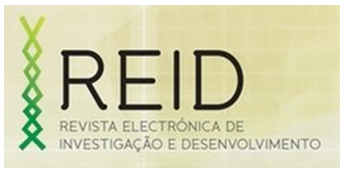O NÍVEL DE PRODUÇÃO AGRÍCOLA NOS DISTRITOS MAIS POBRES DA PROVÍNCIA DE SOFALA
Ibraimo Mussagy
DOI:
https://doi.org/10.70634/reid.v2i3.34Palabras clave:
Produção Agrícola, Pobreza, Políticas de Desenvolvimento, Agricultural Production, Poverty Headcount Index, Development PoliciesResumen
Neste trabalho, é analisada a relação entre pobreza e os níveis de produção agrícola em Sofala, uma das dez províncias de Moçambique. Recentemente, Sofala foi uma das províncias mais afectados pela pobreza. Durante a Primeira Avaliação Nacional da Pobreza, Sofala foi considerada a província mais pobre do país. Em particular, a análise centra-se nos distritos mais pobres da província nomeadamente: Machanga, Mwanza e finalmente Maringue. Dados do Inquérito Nacional sobre as Condições de Vida das Populações, 1996-1997 e 2002-2003, dados do Recenseamento da População e Habitação e dados sobre a produção agrícola foram usados para analisar a situação nos distritos mais pobres. Estas fontes de informação permitiram o cálculo do índice de pobreza e de apresentar o nível de produção agrícola em relação ao cereal, milho e vegetais. O estudo apontou que a alta taxa de pobreza é encontrado em Machanga, Mwanza e Maringue que fixou o nível de pobreza em 57%, 67% e 69%, respectivamente. O elevado nível de pobreza nestes distritos estão associadas principalmente com a guerra civil, que durou vários anos e a seca que ocorreu antes de 2003. Como consequência, a produção de alimentos não foi a melhor. O documento conclui que os pobres vivem na base da agricultura e são mais vulneráveis. As políticas de desenvolvimento para melhorar a aumentar o cenário em Sofala são para alocar mais recursos financeiros para a agricultura e criar condições mínimas de mercado agrícola.
In this paper, we study the relationship between poverty and agriculture in Sofala, one of the ten provinces of Mozambique. In recent years, Sofala was one of the most affected provinces by the poverty. During the First National Assessment of Poverty, Sofala was considered the poorest province in the country. In particular the analysis focuses on the poorest districts of the province namely: Machanga, Mwanza and finally Maringue. Data from the Mozambique National Household Survey, 1996 to 1997 and 2002 to 2003, the Second General Population and Housing Census and data on agricultural production were used to analyze the situation in the poorest districts. These sources of information allow calculating the poverty headcount index and to present the level of agricultural production with respect to cereal, maze and vegetables. The study pointed out that the high poverty rate is found in Machanga, Mwanza and Maringue which fixed the level of poverty at 57 %, 67 % and 69 %, respectively. The high level of poverty in these districts are mainly associated with the civil war, that lasted for several years, and to the period of drought that occurred before 2003. As a consequence, food production was not the best. The paper concludes that the poor live on the basis of agriculture and are more vulnerable. The development policies to improve the scenario in Sofala are to allocate more financial recourses on agriculture and create minimum conditions of agricultural market.

